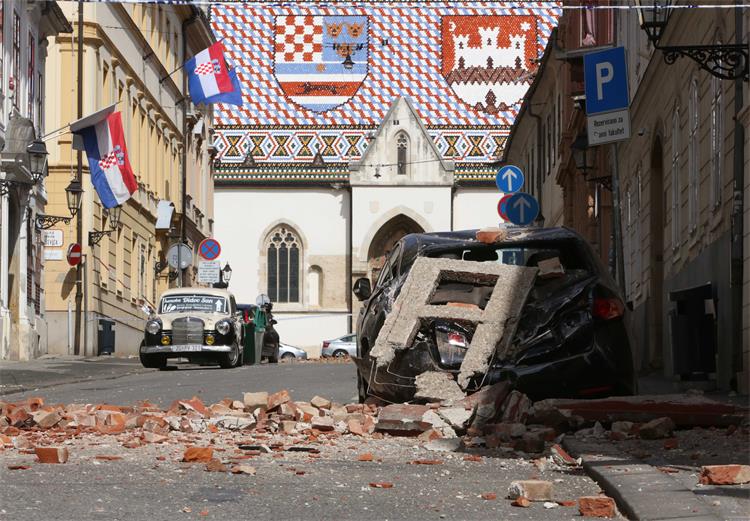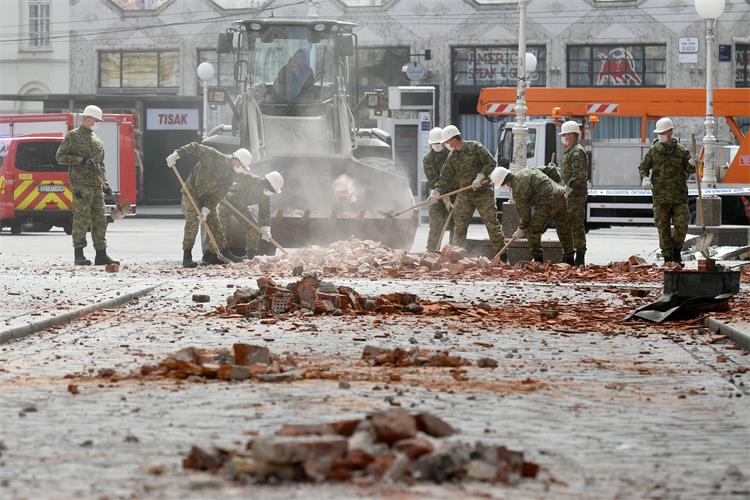Reconstruction of earthquake-damaged buildings in the City of Zagreb and its surroundings
The devastating earthquake that hit the city of Zagreb, Krapina-Zagorje County and Zagreb County on 22 March 2020 caused great damage to private and public.
Photo source: Cropix
The Ministry of Construction and Physical Planning, in cooperation with the Government of the Republic of Croatia and other competent bodies, has undertaken a series of activities with the aim of assisting citizens who suffered damage caused by the earthquake and, within the scope of its competence, has been continuously undertaking further activities in order to facilitate the situation for citizens and the profession.
The Ministry has established a team of experts dealing with this problem, and a special telephone line has been opened for citizens: 01/3782-117, which they can contact every working day from 9 to 14 hours.
The aim is to renovate Zagreb and its surroundings in accordance with all the rules and standards required by the profession. The rehabilitation will be complex and therefore a legal framework is needed to provide the best response to the situation we have found ourselves in. For the Proposal of the Act on the Reconstruction of Earthquake-damaged Buildings in the Territory of the City of Zagreb, Krapina-Zagorje County and Zagreb County, public consultations were conducted through the eSavjetovanje portal, in the period from 15 May to 14 June 2020. The processing of received comments and proposals is under way.
Until the adoption of the Reconstruction Act activities are being undertaken to alleviate the process of emergency rehabilitation to citizens and the profession.
Damage assessment
On 23 April 2020, Professor Josip Atalić of the Faculty of Civil Engineering presented a preliminary assessment of the post-earthquake reconstruction of Zagreb and its surroundings amounting to about EUR 5.6 billion and involving complete renovation, up to the level of currently valid earthquake resistance standards, for hospitals and educational institutions only, whereas the price of such renovation for all damaged facilities would amount to around EUR 13.3 billion.
If only the necessary, “cosmetic” measures were taken, the total cost of reconstruction would amount to slightly less than EUR 1.2 billion. This was the starting point for the preparation of a total of seven cost estimate variants, and it was finally decided that optimal was the one according to which the total direct financial damage is estimated at about EUR 5.6 billion, or approximately HRK 42 billion. On the other hand, if all damaged buildings were to be reinforced to the level of the regulations effective today, this would cost EUR 13.3 billion.
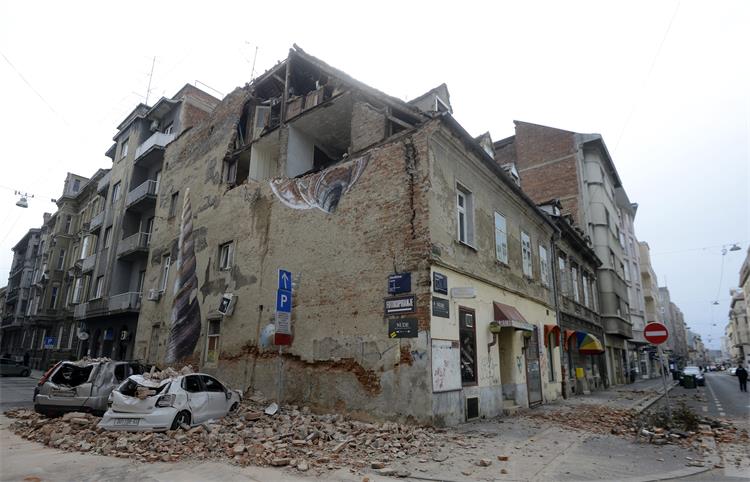
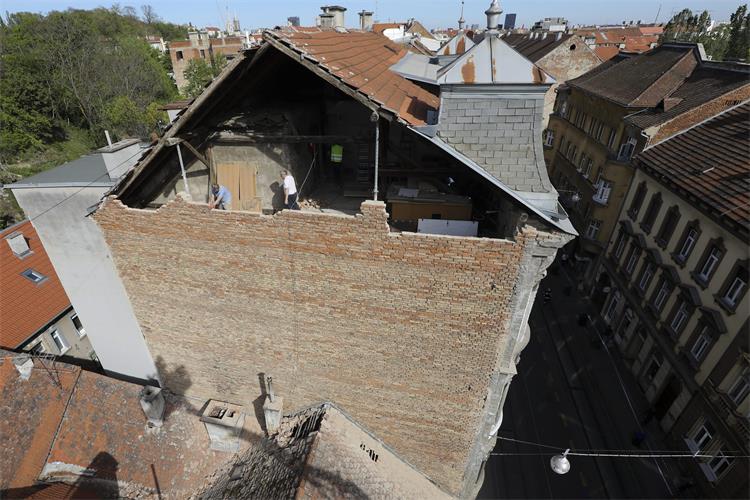
Photo source: Cropix
Preliminary inspections of buildings were performed by engineers -- volunteers. The city's emergency management office provided an online application through which citizens could sign up for an inspection of buildings to establish damage caused by the earthquake. After completing the questionnaire, the building was entered into the database for earthquake damage examination, and its condition was established by structural engineers. This inspection was organised by the Civil Protection Headquarters. After the preliminary assessment of damage to buildings, for all additional questions citizens can contact the Sector for Construction and Repair of Damaged Facilities for Social Activities and Housing, Ulica grada Vukovara 58b, first floor, room 106, phone: 01/6100-921; 01/6100-709, e-mail: obnovazgrada@zagreb.hr
In cooperation with court experts of the civil engineering profession - assessors, according to the request of the City of Zagreb and the instructions of the State Commission for Damage Assessment, in order to clarify and facilitate the work of the members of the expert committee, in June 2020 the Ministry prepared recommendations for the implementation of the Ordinance on the register of damages from natural disasters for assessing damage to construction works. The purpose of these recommendations is to clarify the provisions of the Ordinance and the manner and structure of the inspection itself (final damage assessment), which will establish the amounts of damage incurred on earthquake-damaged buildings. The recommendations provide an expert opinion on the manner of carrying out the procedure, on the prescribed procedures and the selected methodology, and by whom and how damage to property that occurred in the earthquake of 22 March 2020 is assessed.
Reconstruction of buildings and damage repair
Organised building renovation shall begin after the adoption of the Reconstruction Act and of the remediation programme. Before the beginning of reconstruction, it is necessary to prepare projects for the works and to contract their execution.
However, before the Reconstruction Act is passed, there are regulations in force so that citizens can start reconstruction even now.
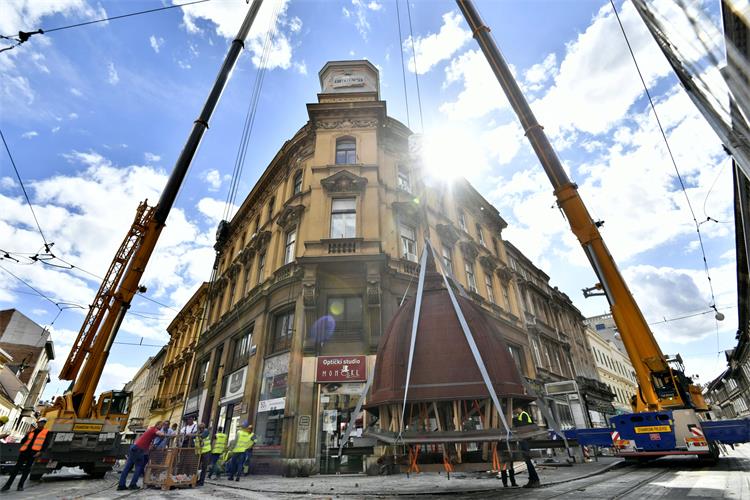

Photo source: Cropix
The currently valid building regulations allow removal of earthquake consequences that have reduced or threatened the serviceability of buildings by carrying out extraordinary maintenance works in such a way that parts of buildings and equipment, devices and installations damaged by an emergency event are replaced by appropriate equivalent parts. Pursuant to the existing law, the roof cover can be replaced without the need for design preparation, whereas modification of the roof structure, walls, columns or flue pipe can be carried out exclusively based on a design prepared by certified persons. Certified civil engineers are competent for structures, whereas certified civil engineers and certified mechanical engineers are competent for chimneys. For an overall reconstruction of earthquake damaged buildings and improvement of their resistance to earthquake action, it is necessary to develop a special design.

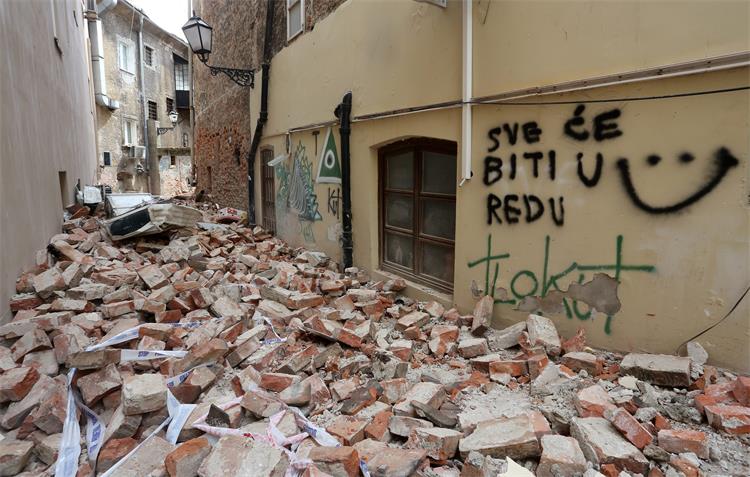
Photo source: Cropix
Amendments to the Technical regulation on construction structures that have been in force since 2 July 2020 have also been adopted. The novelty of the regulation is the Annex with the levels of reconstruction of earthquake-damaged structures of buildings in relation to mechanical resistance and stability. The objective of the amendments to the Technical regulation was to clearly define the procedure for repair and reinforcement of structural and/or non-structural elements with a level of reconstruction appropriate to the perils of the area and the earthquake risk of the building, related to the seismic damage potential of the building and its purpose. In the Annex to the amendments of the Technical regulation the levels of reconstruction by earthquake-damaged structures of buildings in the area of Zagreb, Krapina-Zagorje County and Zagreb County are described. The renovation of the building construction must not adversely affect the fulfilment of other essential requirements in relation to the level at which they were fulfilled before the earthquake, while the renovation should be carried out at the level according to the Annex to the amendments of the Technical regulation or the level of seismic resistance that was in force at the time the building was built, with the stricter criterion of seismic resistance applicable.
On 3 July 2020, the Ministry delivered the Instruction on the existing legal possibilities of approach to the renovation of earthquake damaged buildings after the entry into force of the Technical regulation amending the Technical regulation on building structures (Official Gazette 75/20).
We also provide information on the development and publication of the “Guide for post-earthquake activities”, which provides an overview of all previous activities of the Ministry of Construction and Physical Planning related to the remediation of damaged buildings and a cross-section of the legal framework, depending on the type of rehabilitation to be implemented. All citizens and engineers concerned are free to adopt it.
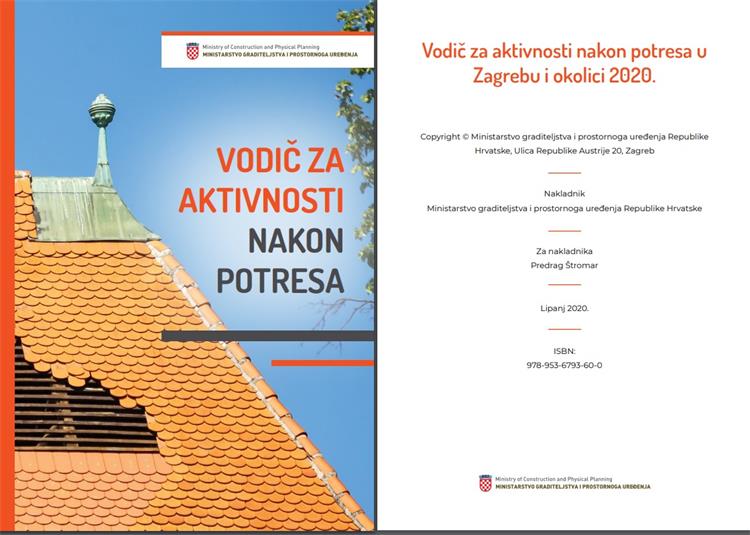
The Faculty of Civil Engineering of the University of Zagreb and the Croatian Chamber of Civil Engineers drafted the manual “Urgent Earthquake Reconstruction Programme – UERO”. When developing the manual, the authors and associates took special care that the technical solutions proposed for the restoration of chimneys, gable walls and other attic structures be the final solution and that renovation can continue by levels of reconstruction, as it shall be prescribed by the Act.

Chimney redevelopment
Chimney recovery cannot be typified, each chimney should be considered separately. A certified mechanical and civil engineer will provide a remediation solution depending on the structure, position and condition of the chimney.
On 11 May 2020, the Ministry of Construction issued instructions for building owners and managers, or representatives of co-owners respectively, related to the restoration of chimneys. A roadmap was developed for the repair or replacement of chimneys, since most inquiries and dilemmas refer to this part of the reconstruction. Building managers and (co)owners shall engage professionals (designers, contractors, supervising engineers), whereby optimal engineering solutions and successful realization of this first phase of reconstruction shall be ensured.
In accordance with the currently valid building regulations, modification of flue pipes shall be carried out exclusively based on a design developed by authorised persons (certified mechanical engineer and certified civil engineer). This procedure is defined in detail in the Technical regulation on chimneys in buildings (Official Gazette 3/07), where apart from the professions involved, the content of the chimney design is prescribed in detail, as well as technical characteristics and other requirements on construction products intended for incorporation into chimneys. Certified civil engineers and mechanical engineers have the necessary knowledge to apply this technical regulation in each specific situation.
Therefore, the aspect of the chimney building element is prescribed in detail in the Technical regulation on chimneys (Official Gazette 3/07), which is within the competence of this Ministry, while the aspect concerning its functionality in thermo-technical terms is prescribed in the Act on Flammable Liquids and Gases (Official Gazette 108/95, 56/10), which is within the competence of the Ministry of the Interior, where the chimney is part of the gas installation.
Allocation of financial assistance to citizens
On 7 May 2020, the Government of the Republic of Croatia passed the Decision on provision, through budget rebalancing, of HRK 141 million for urgent rehabilitation and procurement of boilers to citizens affected by the earthquake.
On 2 June 2020, following this Government decision, the Ministry of Construction and Physical Planning announced a public call for financial assistance allocation for the temporary and necessary protection and repair of earthquake-damaged buildings in the City of Zagreb, Zagreb County and Krapina-Zagorje County. Applications are received via the electronic service e-Emergency repair of earthquake-damaged buildings of the e-Citizens system from 10 June to 31 October 2020. Information on the reconstruction of earthquake-damaged buildings and application under the public call can be obtained every working day from 9 to 14 hours at phone 01/3782-117.
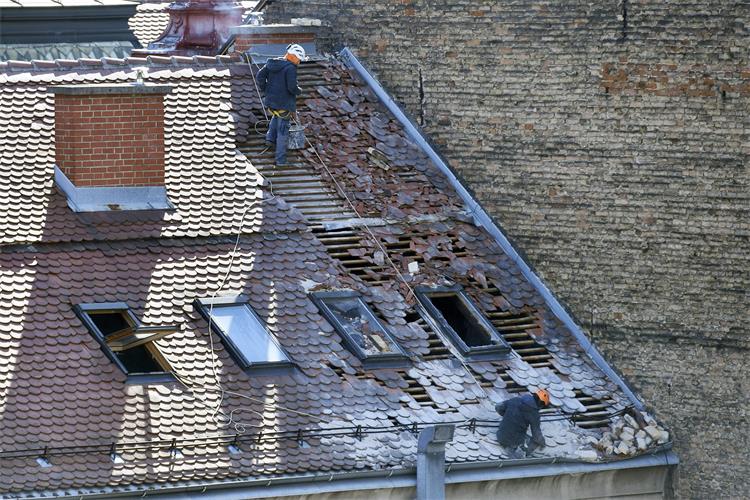

Photo source: Cropix
- Building managers and/or
- Representatives of co-owners in case of multi-residential and business and residential buildings
- Co-/owners of family houses
- Applicants’ plenipotentiaries, provided that the power of attorney is attached
Digital applications can also be submitted by plenipotentiaries of representatives of building co-owners of and co-owners/owners of houses, also via the e-Citizens system, and this latter way is recommended. If authorisation is given for application submission only through the e-Citizens system, then such authorisation does not have to be certified by a notary public. If the authorisation includes also the planned payment of the granted financial assistance to an IBAN account of the authorised person or third party, then consent by all co-owners of the building/family house, certified by public notary, is required, whereby all co-owners agree that payment for the specific building or house is made to the IBAN (account) of the person indicated in the consent.
However, although applications are received digitally, citizens who are not able to do so can submit their request in person, every working day from 9 to 14 hours at the location of the Ministry of Construction and Physical Planning in Zagreb, Vinogradska cesta 25. Documents can be submitted in hard copy, but also in digital format (on USB, CD or DVD).
- Public call for allocation of pecuniary assistance
- Amendment to Public call for allocation of pecuniary assistance
- Instructions for the implementation of the Decision on financial assistance provision
- APPLICATION under the public call
On 10 June 2020, the Environmental Protection and Energy Efficiency Fund announced the public call for co-financing the purchase of condensing boilers. Information on the public call and the manner of application can be found on the website of the Fund http://www.fzoeu.hr/.
Replacement accommodation
For those whose houses have suffered damage to the extent that they are not safe for use, temporary accommodation and a warm meal are provided in the Cvjetno naselje hall of residence. Zagreb's crisis headquarters called on those whose buildings were severely damaged by the earthquake to contact a special line in order to be provided adequate assistance as soon as possible. The city opened the free phone number 0800 8805 at which citizens affected by the earthquake can receive assistance.
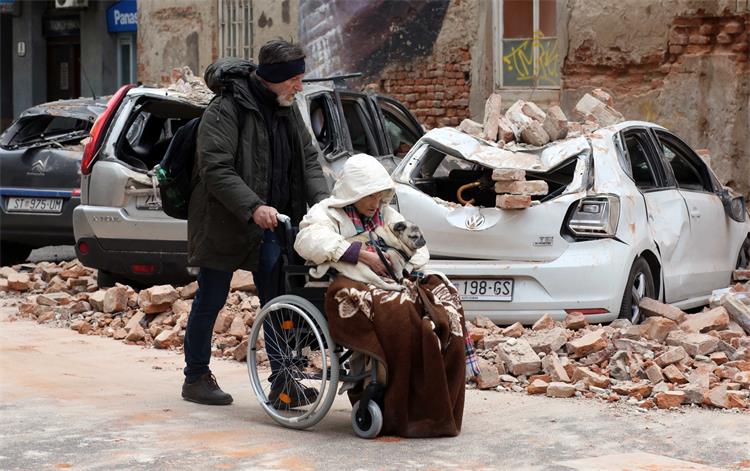
Izvor fotografija: Cropix
On 14 May 2020, the Government adopted the Decision on rent co-financing and the Ministry of State Property is responsible for its implementation. On 15 May 2020, the decision was published in Official Gazette 57/20. On 19 May 2020, the Ministry of State Property announced a public call for rent financing for housing provision to persons whose property was damaged in the earthquake in the territory of the City of Zagreb, Zagreb County and Krapina-Zagorje County. Information can be obtained every working day from 8:30 to 16:30 hours at phone: 01/6448-900 or by e-mail: financiranje.najamnine@midim.hr
Remediation funds
Apart from being a complex expert issue requiring an interdisciplinary approach, reconstruction will also be extremely demanding in financial terms. Therefore, the Government of the Republic of Croatia, in parallel to drafting the act, initiated the process of providing funds from other sources.
Let us remind that as early as 26 March 2020 the Ministry of Construction and Physical Planning started communication with the World Bank, and as of April the Ministry communicated almost daily with the Bank and prepared documents under accelerated procedure. For this purpose, together with the Faculty of Civil Engineering in Zagreb and experts from the Croatian Chamber of Civil Engineers, the first estimates of the reconstruction costs were made. On 4 June 2020, the Government of the Republic of Croatia adopted the Report on conducted negotiations for the conclusion of the Loan Agreement between the Republic of Croatia and the International Bank for Reconstruction and Development for the Project of post-earthquake recovery and strengthening public health preparedness for a total value of USD 200 million. In parallel, the Ministry of Construction worked on the preparation of documents for the EU Solidarity Fund, with the Ministry of Regional Development and EU Funds being competent for the respective application.
For the purpose of obtaining funds from external sources of financing, the Ministry of Construction prepared, in cooperation with experts from the Faculty of Civil Engineering and the Chamber of Civil Engineers, the first preliminary estimate of the cost of reconstruction, which was the basic document for initiating the respective procedure.
- Proposal of the Decision on opening the procedure for the conclusion of the Loan agreement between the Republic of Croatia and the International Bank for Reconstruction and Development for the Project of post-earthquake recovery and strengthening the response to COVID-19
- Report on the conducted negotiations for the conclusion of the Loan agreement between the Republic of Croatia and the International Bank for Reconstruction and Development for the Project of post-earthquake recovery and the strengthening of public health preparedness
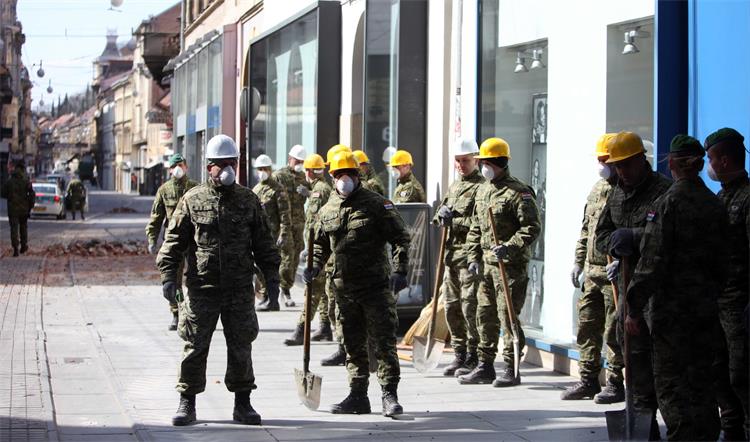
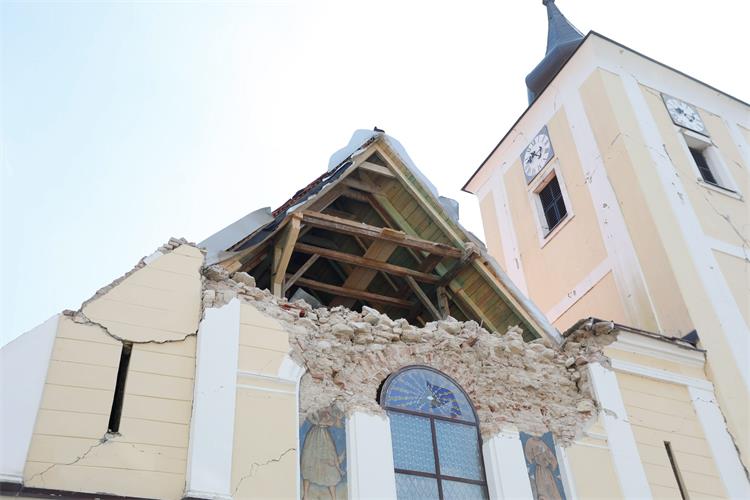
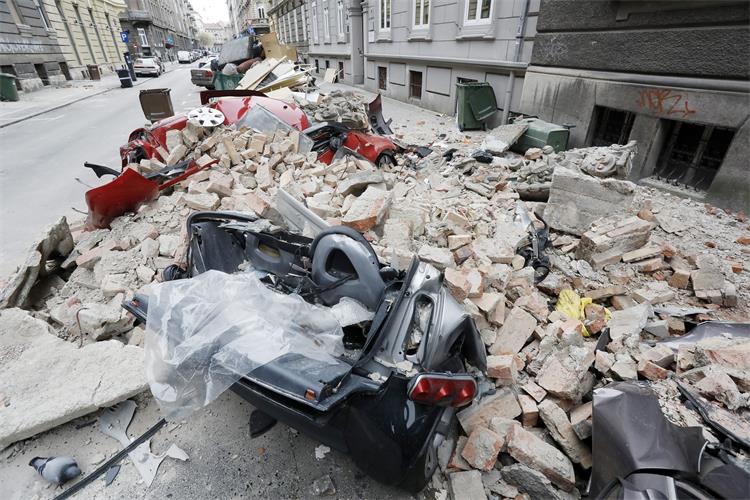
Photo source: Cropix
